Do people listen to what you have to say?
Persuasion in marketing and business is often thought of as a way to bring people around to your way of thinking. And the persuasion books included on this list will help you do that. But on a more fundamental note, persuasion begins by making sure people listen to you. It begins when you craft a message that connects with people.
The word “persuasion” sometimes has some negative connotations, so let’s start by defining what persuasion actually is.
What is persuasion?
Persuasion is to move by argument, entreaty, or to reason with someone earnestly to urge someone to do something.
Effective persuasion takes a strong understanding of human psychology and motivation (and several of the books on this list are by psychologists).
For small business owners and marketers, understanding persuasion is important because it helps you put together products, deals, and messages that people care about.
If you want to get more people to care about what you have to offer, these books on persuasion can help.
(For more best practices, read our blog on how to use psychological persuasion techniques for marketing and sales)
What are the Best 15 Books on Persuasion?
- Influence: The Psychology of Persuasion by Robert Cialdini
- Made to Stick: Why Some Ideas Survive and Others Die by Chip Heath and Dan Heath
- Getting to Yes: Negotiating Agreement Without Giving In by Roger Fisher and William Ury
- Nudge: Improving Decisions About Health, Wealth, and Happiness by Richard Thaler and Cass Sunstein
- Words That Work: It’s Not What You Say, It’s What People Hear by Frank Luntz
- Pre-Suasion: A Revolutionary Way to Influence and Persuade by Robert Cialdini
- Age of Propaganda: The Everyday Use and Abuse of Persuasion by Elliot Aronson and Anthony Pratkanis
- Scientific Advertising by Claude Hopkins
- The Power Broker: Robert Moses and the Fall of New York by Robert Caro
- Trust Me, I'm Lying: Confessions of a Media Manipulator by Ryan Holiday
- The Geography of Thought: How Asians and Westerners Think Differently by Richard Nisbett
- How to Win Friends and Influence People by Dale Carnegie
- Thinking, Fast and Slow by Daniel Kahneman
- The 48 Laws of Power by Robert Greene
- Breakthrough Advertising by Eugene Schwartz
Try it now, for free
1. Influence: The Psychology of Persuasion by Robert Cialdini
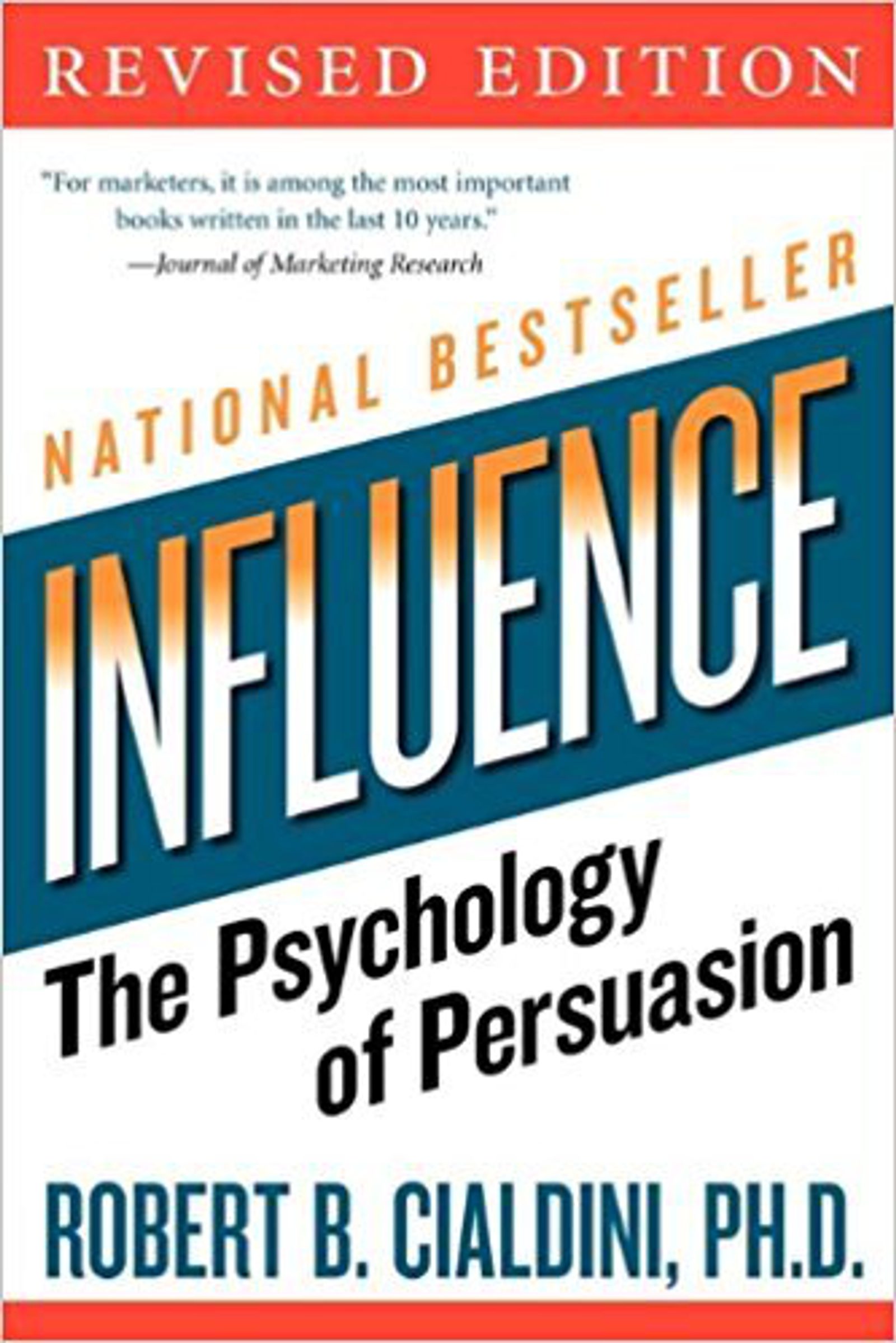
Source: Amazon
This may be the most influential (no pun intended) book on persuasion and marketing ever written.
Drawing on decades of experience as a social psychologist, Robert Cialdini lays out the “six universal principles of influence.”
Why do people make decisions? Where do beliefs come from? How are those beliefs formed and altered based on our circumstances and surroundings?
These are questions Cialdini tackles in this seminal work. Boiling down a vast body of research into actionable insights, he leaves us with these six principles of persuasion:
- Reciprocity: People are more likely to help those who have helped them in the past
- Commitment/Consistency: People are likely to act in ways consistent with their previous behavior—whether those courses of action still make sense or not
- Authority: People are more willing to believe and trust experts and authoritative figures
- Social Proof: People are more easily persuaded to a position when they can see that those around them believe that position
- Scarcity: People are more attracted to opportunities that seem rare or exclusive
- Liking: People are more likely to be persuaded by those they like
These six principles have helped copywriters, marketers, and business owners create more compelling communications since Influence was first published. It may very well be the best book on persuasion ever written.
2. Made to Stick: Why Some Ideas Survive and Others Die by Chip Heath and Dan Heath
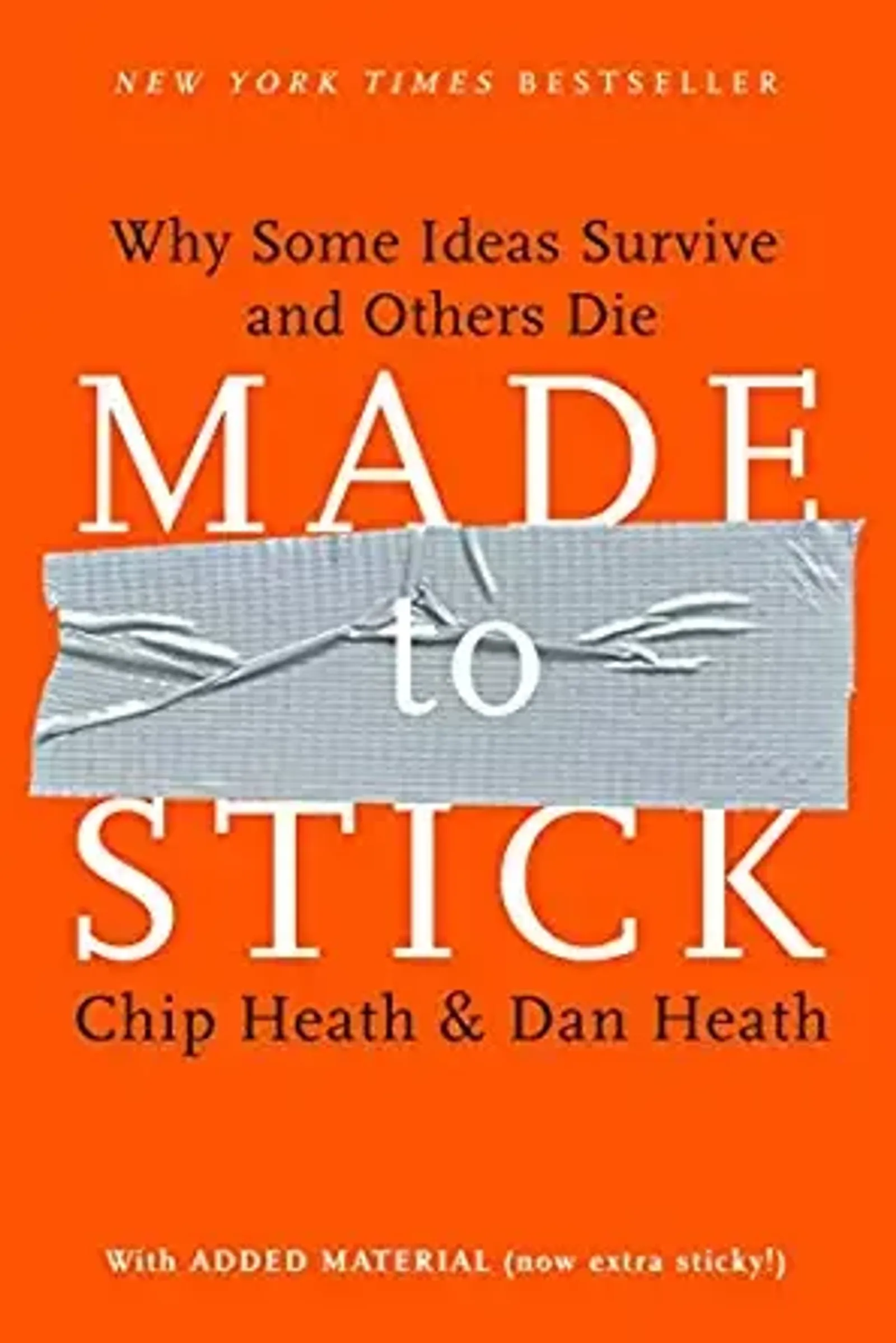
Source: Amazon
Small businesses are faced with a simple yet massive challenge—how do you get people to remember you?
Made to Stick is an exploration of what makes things memorable. Why, for example, does the idea of a razor blade in your Halloween candy persist—despite the fact that there are no recorded stories of it actually happening?
Brothers and business experts Chip and Dan Heath explore what makes some ideas memorable and persuasive. They identify six factors, which conveniently and memorably spell out the word “SUCCESs:”
- Simple: Sticky ideas are simple and easy to understand
- Unexpected: Ideas that surprise us stick in our memory more easily
- Concrete: Ideas that are easy to imagine and picture in our heads are easy to remember
- Credible: Ideas coming from credible sources are more believable and accepted as truth
- Emotional: Emotionally charged ideas stick in our heads more clearly
- Stories: Stories are easier to remember than abstract ideas or concepts
Following these steps to “SUCCESs” can help you be more persuasive in your marketing—and prevent you from being forgotten.
3. Getting to Yes: Negotiating Agreement Without Giving In by Roger Fisher and William Ury
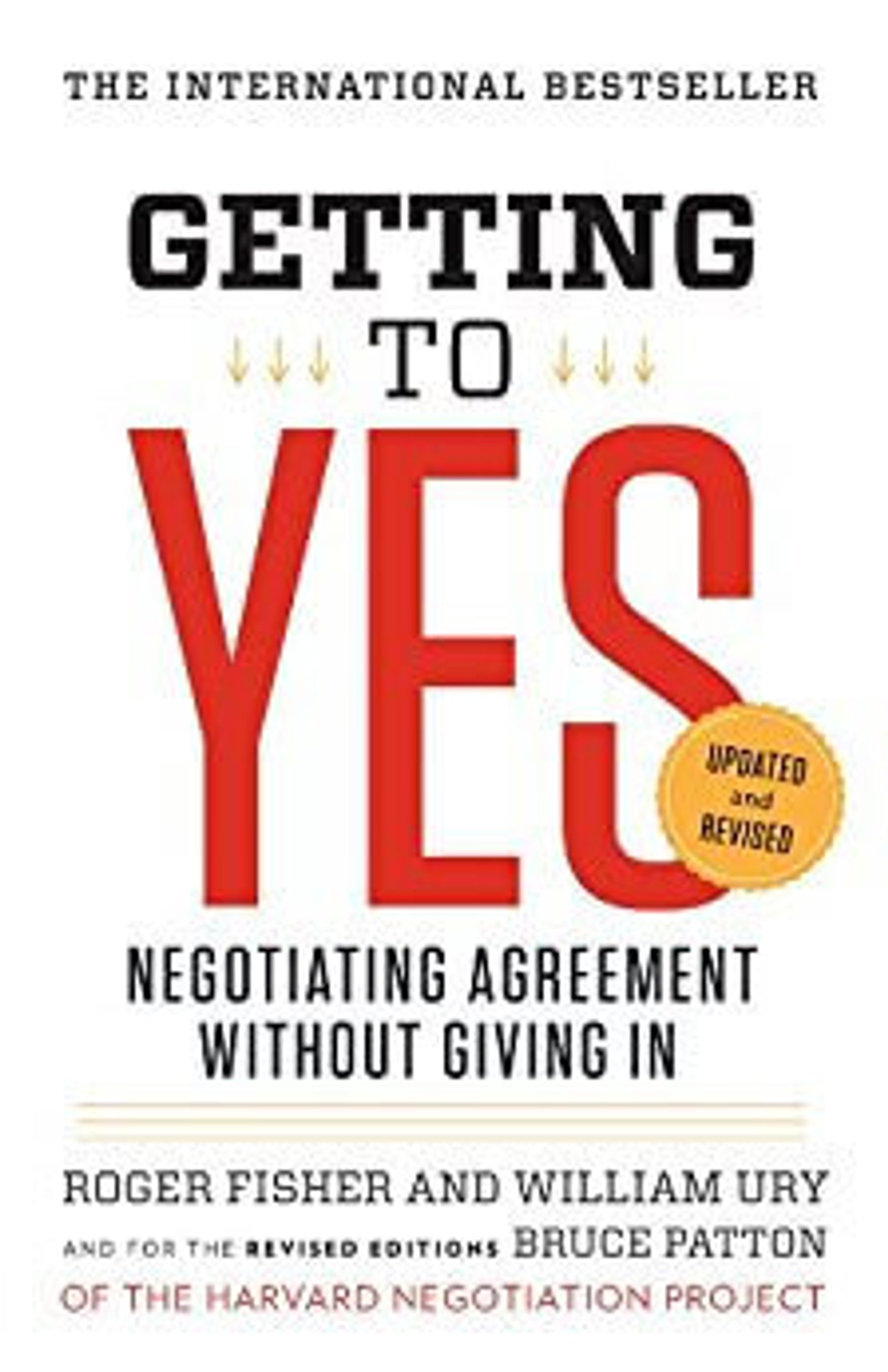
Source: Amazon
Persuading people in your marketing is one thing. How can you be more persuasive in your negotiations?
Negotiating agreements is a huge piece of business, and becoming a more effective negotiator is one of the more powerful steps you can take in a small business.
In Getting to Yes, Roger Fisher and William Ury challenge the conventional wisdom around negotiation. Rather than adopting firm positions and refusing to budge, the authors argue that more persuasive and effective negotiation follows these four principles:
- Separate the people from the problem: Instead of viewing negotiation as a competition, look for ways to work together and solve the mutual problem that brings you to the negotiating table
- Focus on interests, not positions: Instead of adopting ironclad negotiating positions, identify the most important interests of each side—and find ways to satisfy everyone’s primary goals
- Generate options for mutual gain: Some interests are more important than others. Understand which less important interests can be sacrificed to find situations that fulfill each side’s most important goals.
- Insist on using objective criteria: Present your case using third party experts or statistics. Use a mutually accepted standard to reach an agreement.
The full text goes into detail on each principle, covering how to respond to negotiation attacks, how to negotiate in situations with lopsided power, and how to deal with a wide variety of specific negotiation scenarios.
4. Nudge: Improving Decisions About Health, Wealth, and Happiness by Richard Thaler and Cass Sunstein
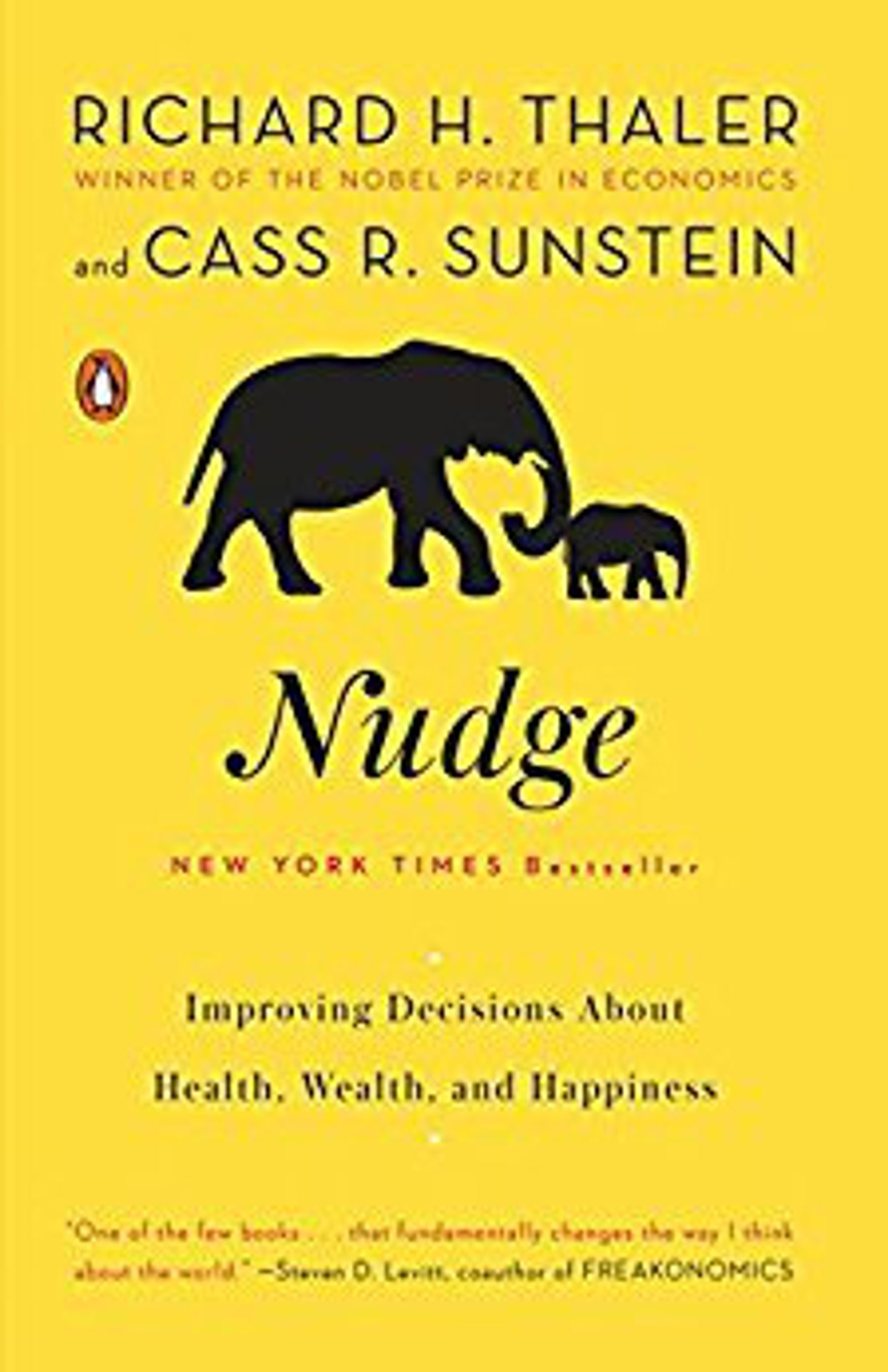
Source: Amazon
Why do people make decisions? In some cases, the explanations might be simpler than you expect.
In Nudge, Richard Thaler and Cass Sunstein examine how seemingly small changes can cause large differences in behavior. By examining “choice architecture,” or how decisions are presented to people, they show how to help people make decisions.
Thaler (who recently won the Nobel Prize in Economics) and Sunstein run through a range of different decision making tools, but two of the most important principles they cover are:
- People do what is easy: If it is difficult to choose one path and easy to take the other, people are more likely to choose the easy path. Removing barriers to a particular decision can help people choose that option.
- People do what they are already doing: If there is a default option to take, more people will take that option—because switching away from a default is harder than sticking with it.
Removing doubts and difficulties related to a purchase is one of the jobs of marketing—and an essential part of improving sales and growing a business. Understanding how ethical nudges can affect behavior is a powerful asset in the marketer’s toolbox.
5. Words That Work: It’s Not What You Say, It’s What People Hear by Frank Luntz

Source: Amazon
Does it ever feel like people aren’t really getting what you say? That they aren’t picking up what you’re putting down?
You might be saying it wrong.
In Words That Work, political strategist Frank Luntz teaches you how to craft a message that people pay attention to—one that they remember and have an emotional reaction to.
The book contains 10 rules for successful communication, provides background research and examples, and even highlights specific words that make a message more compelling.
The 10 rules for successful communication are:
- Simplicity
- Brevity
- Credibility
- Consistency
- Novelty
- Sound and texture
- Speak aspirationally
- Visualize
- Ask questions
- Give context
Use these rules when you craft your message. You’ll be amazed by the results.
6. Pre-Suasion: A Revolutionary Way to Influence and Persuade by Robert Cialdini
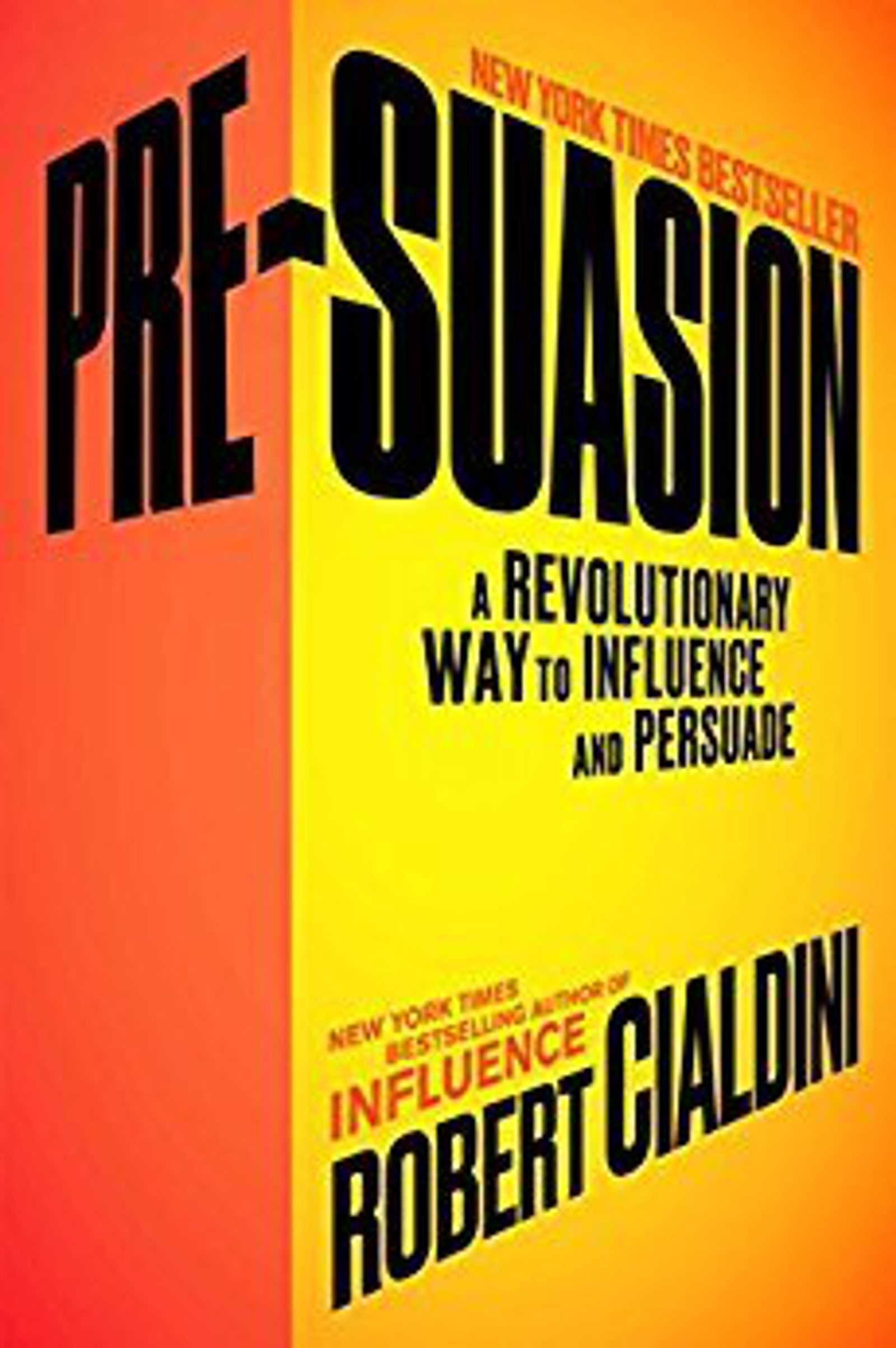
Source: Amazon
Persuasion begins before the first word of the first conversation.
That’s the thesis of Pre-Suasion, Robert Cialdini’s second contribution to this list. In Pre-Suasion, Cialdini argues that the moments before a message is presented—before any conversation or argument begins—can actually have a profound impact on decisions.
The reason? Attention.
Psychologically, people assume that what they pay attention to is important—regardless of how important it actually is.
That means that a clever persuader can make their argument more compelling just by changing the focus of attention.
Cialdini covers a variety of ways this might happen—as well as the elements of a message that can draw and keep attention. He also recaps his famous six factors of persuasion—and adds a seventh.
7. Age of Propaganda: The Everyday Use and Abuse of Persuasion by Elliot Aronson and Anthony Pratkanis

Source: Amazon
“It is our hope that knowledge about the process of persuasion will allow all of us to detect and resist some of the more obvious forms of trickery and demagoguery.”
This quote describes the goal of Age of Propaganda. Written by a pair of well-respected researchers, Age of Propaganda summarizes the psychological and sociological research on persuasion—and demonstrates how persuasion is abused in everyday life.
Because it comes from a pair of researchers and was published at a similar time, Age of Propaganda is often compared to Cialdini’s Influence. It’s an apt comparison—but the scope of Age of Propaganda is much broader.
The book is difficult to summarize, but here’s a quick taste of some of the examples it uses to illustrate everyday persuasion:
- How panhandlers can increase their donations by 60 percent (by changing one word)
- Why saying “even a penny helps” will double door-to-door donations
- The subtle language change that makes students 3x tidier
- The critical mistakes made during the O.J. Simpson trial (and why a two-sided argument might have worked)
Overall, a fascinating book that’s worth the read.
8. Scientific Advertising by Claude Hopkins

Source: Amazon
Originally published in 1923, Scientific Advertising remains a classic text of advertising, copywriting, and persuasion.
Scientific Advertising established two of the most important ideas in modern marketing. First, on page six, Hopkins argues that:
“To properly understand advertising or to learn even its rudiments one must start with the right conception. Advertising is salesmanship.”
“To properly understand advertising or to learn even its rudiments one must start with the right conception. Advertising is salesmanship.”
Claude HopkinsSecond, throughout the text, Hopkins makes the point that advertising must be tested, measured, retested, and perfected.
The book is short—some of the language feels a bit dated (since it’s nearly 100 years old), but you could probably finish it in an afternoon.
But throughout, you’ll find nuggets of advertising wisdom every bit as relevant today as they were in 1923.
Get marketing advice weekly
9. The Power Broker: Robert Moses and the Fall of New York by Robert Caro
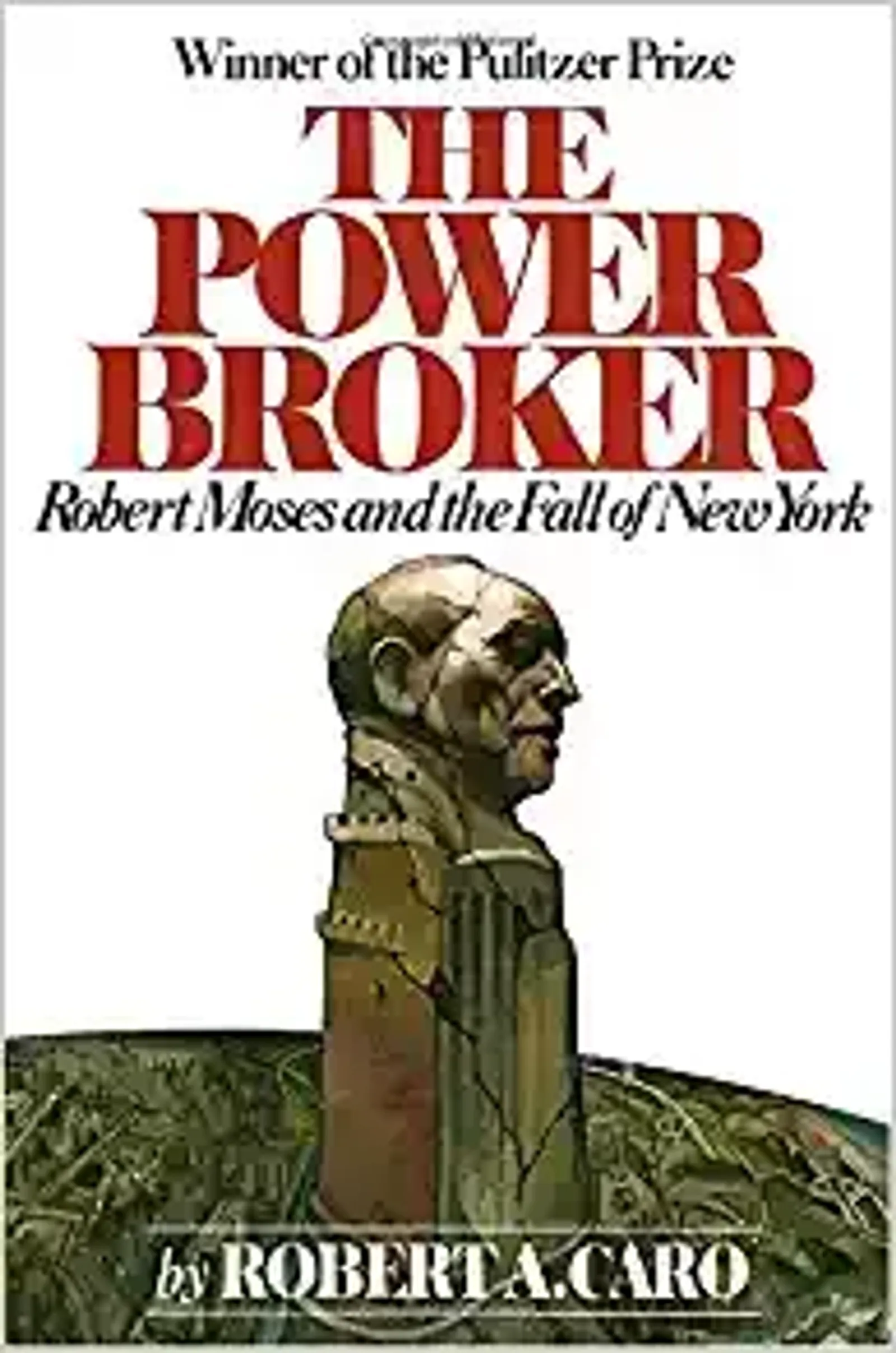
Source: Amazon
Robert Moses may be the most powerful person you’ve never heard of.
Some people attribute the rise of the American suburb to Robert Moses’ philosophy of urban design. Others cite him as the reason that the Brooklyn Dodgers moved to Los Angeles.
All agree that he profoundly influenced the infrastructure and development of New York City.
And yet, despite his influence—he once held 12 different titles simultaneously—Robert Moses never held elected office.
In The Power Broker, Pulitzer Prize winning biographer Robert Caro unveils the secrets of Robert Moses. Who was this powerfully influential figure, and how did he gain his power?
The Power Broker isn’t for the faint of heart—the book clocks in at over 1300 pages (which are large, with small type).
But if you make it through, this book gives you a clear-eyed look at one of the 20th century’s most controversial figures.
Media expert Ryan Holiday describes Robert Moses as follows:
“His achievements are on the level not of any Roman emperor but of Rome, and not so much of any generation but of entire civilizations...The public couldn’t stop him, the mayor couldn’t stop him, the governor couldn’t stop him, and only once could the President of the United States stop him.”
And Barack Obama describes The Power Broker as a book that shaped his views on politics.
"I think about Robert Caro and reading The Power Broker back when I was 22 years old and just being mesmerized, and I'm sure it helped to shape how I think about politics."
10. Trust Me, I’m Lying: Confessions of a Media Manipulator by Ryan Holiday
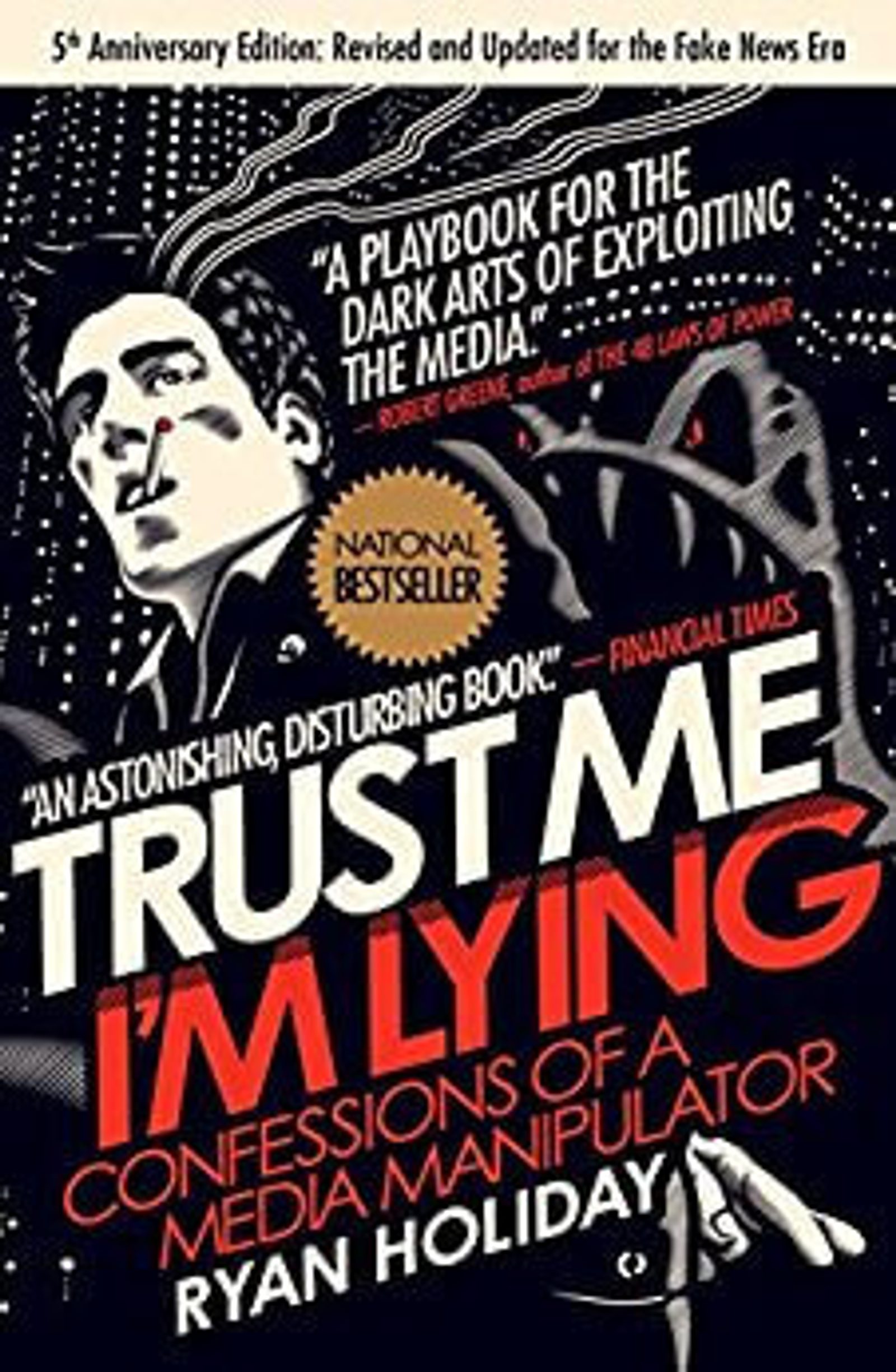
Source: Amazon
Where does the news come from?
That sounds like a silly question, right? News gets reported because it’s news.
Not according to Ryan Holiday. The director of marketing at American Apparel by age 21, Ryan Holiday describes an astounding behind-the-scenes process of media manipulation.
At the core of this manipulation? The media wants stories that spread. They need people to find those stories.
In an effort to raise awareness of the manipulation of media, Holiday paints a picture of how stories are created—beginning in a marketing department, spreading to small blogs, and then gradually getting “traded up the chain” to reach major publications.
Trust Me, I’m Lying is an eye-opening look at the modern media engine of persuasion.
11. The Geography of Thought: How Asians and Westerners Think Differently by Richard Nisbett

Source: Amazon
Very different from most of the books on this list, The Geography of Thought covers an oft-overlooked area of psychology.
In business, in politics, and in general—we tend to assume that people think like us. But do they?
Richard Nisbett is one of the foremost researchers on cross-cultural psychology.
In The Geography of Thought, he reviews how different environments, social structures, philosophies, and cultures affect the thought patterns of people who live in them.
The Geography of Thought doesn’t explicitly cover persuasion. But it does provide several examples of situations where cross-cultural negotiations fell apart—because of unacknowledged differences in thought.
12. How to Win Friends and Influence People by Dale Carnegie
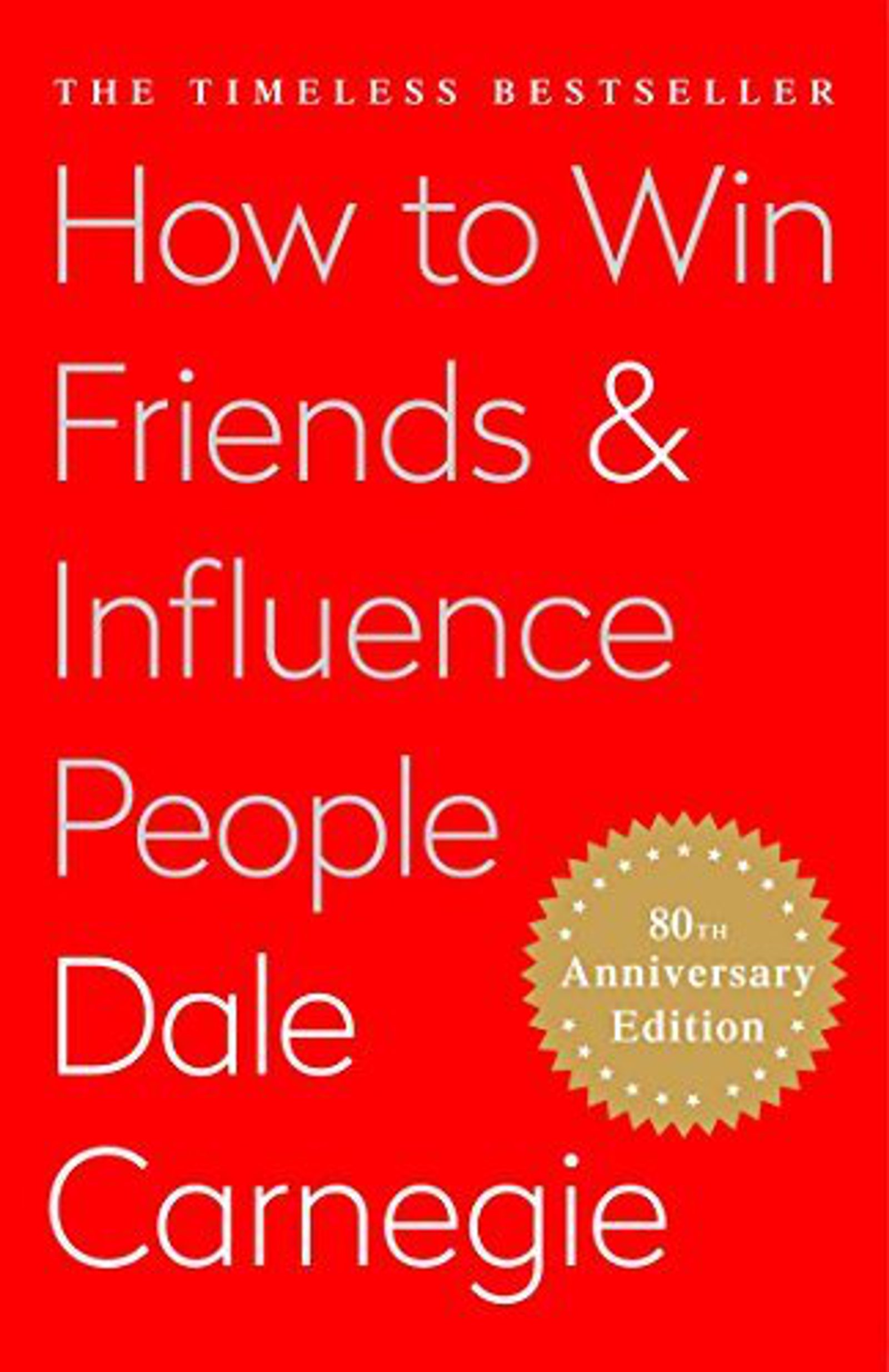
Source: Amazon
How to Win Friends and Influence People is one of the most popular books of all time.
Despite its title, most of this book is a training in becoming more likeable and friendly. It contains lessons like “become genuinely interested in other people” and “give honest and sincere appreciation” and “be a good listener.”
In one of my favorite examples, Carnegie poses a question: why do people like dogs? The answer: because dogs are always happy to see them.
The book eventually branches into sections on how to persuade people of your points. But even then, the approach is ultimately reasonable and respectful, featuring advice like “Show respect for the other person’s opinions” and “Try honestly to see things from the other person’s point of view.”
The book is divided into seven major sections:
- Twelve Things This Book Will Do For You
- Fundamental Techniques in Handling People
- Six Ways to Make People Like You
- Twelve Ways to Win People to Your Way of Thinking
- Be a Leader: How to Change People Without Giving Offense or Arousing Resentment
- Letters That Produced Miraculous Results
- Seven Rules For Making Your Home Life Happier
For anyone looking to become more likable or persuasive, this book is a classic read.
13. Thinking, Fast and Slow by Daniel Kahneman
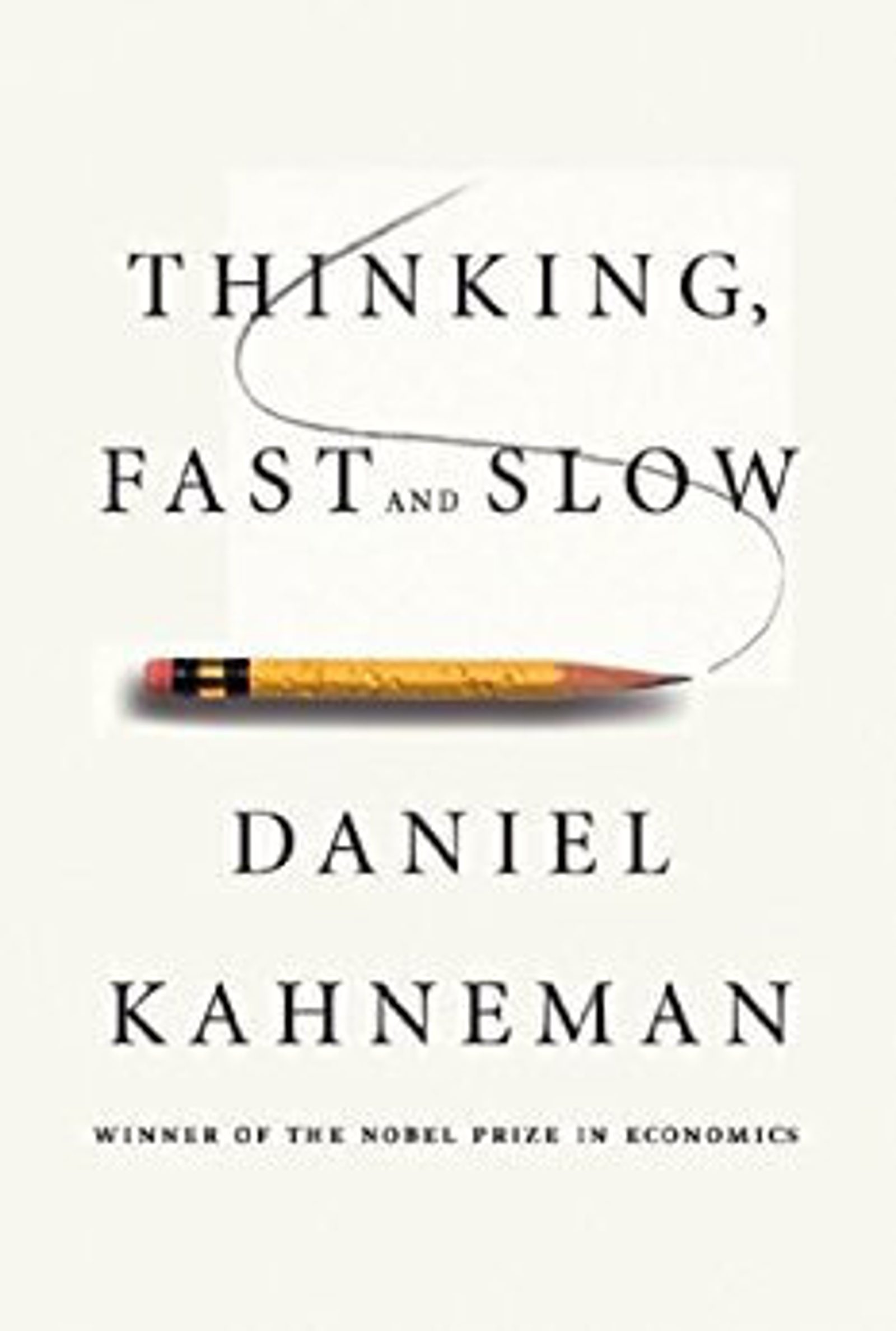
Source: Amazon
Daniel Kahneman is one of the only psychologists to win the Nobel Prize, which he was awarded for his research on decision making.
Thinking, Fast and Slow is his first book intended for a general audience—and the insights it contains have far-reaching implications for marketing and persuasion.
Drawing on decades of psychology research, Kahneman demonstrates that people generally think in two ways—appropriately named System 1 and System 2.
- System 1 thinking is fast, automatic, and emotional. It helps us draw conclusions and make decisions very quickly, but does so using “rules of thumb” (heuristics) that are sometimes wrong.
- System 2 thinking is slow, logic-based, and effortful. It involves carefully working through information to arrive at a solution.
To be clear: Kahneman does not say that either system is “better” in terms of the quality of decision it results in.
The research on systems also doesn’t imply (as some marketers have assumed) that marketing should be targeted primarily at System 1.
What Thinking, Fast and Slow helps you do is understand how each system affects decision making—and which situations are likely to activate one system over the other.
By appealing to the right systems at the right times, you can become more persuasive.
14. The 48 Laws of Power by Robert Greene
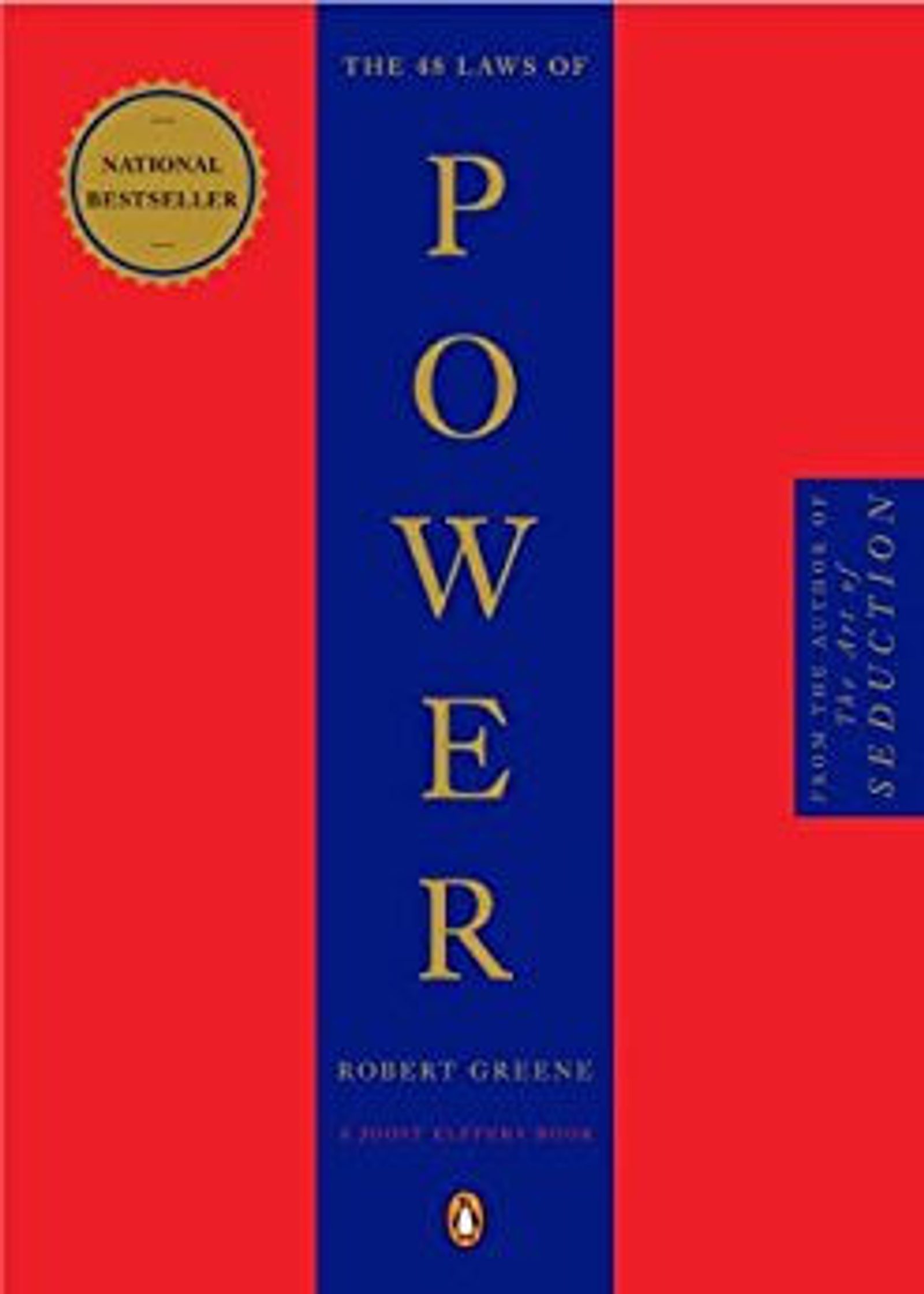
Source: Amazon
The 48 Laws of Power is a controversial book. Some people argue that some of the laws contradict other laws. Others dislike the amoral nature of the book—it takes an unquestionably Machiavellian view.
Still, The 48 Laws of Power is a fascinating analysis of power dynamics throughout history. Drawing on examples from diverse times, geographies, cultures, and subject areas, Robert Greene lays out 48 principles that powerful people tend to follow.
The 48 Laws of Power contains such disparate advice as “take credit for other people’s work” and “surround yourself with positive people.” The matter-of-fact tone is jarring at first, but in the end this book is at least worth a read—even if you don’t base your life around it.
15. Breakthrough Advertising by Eugene Schwartz
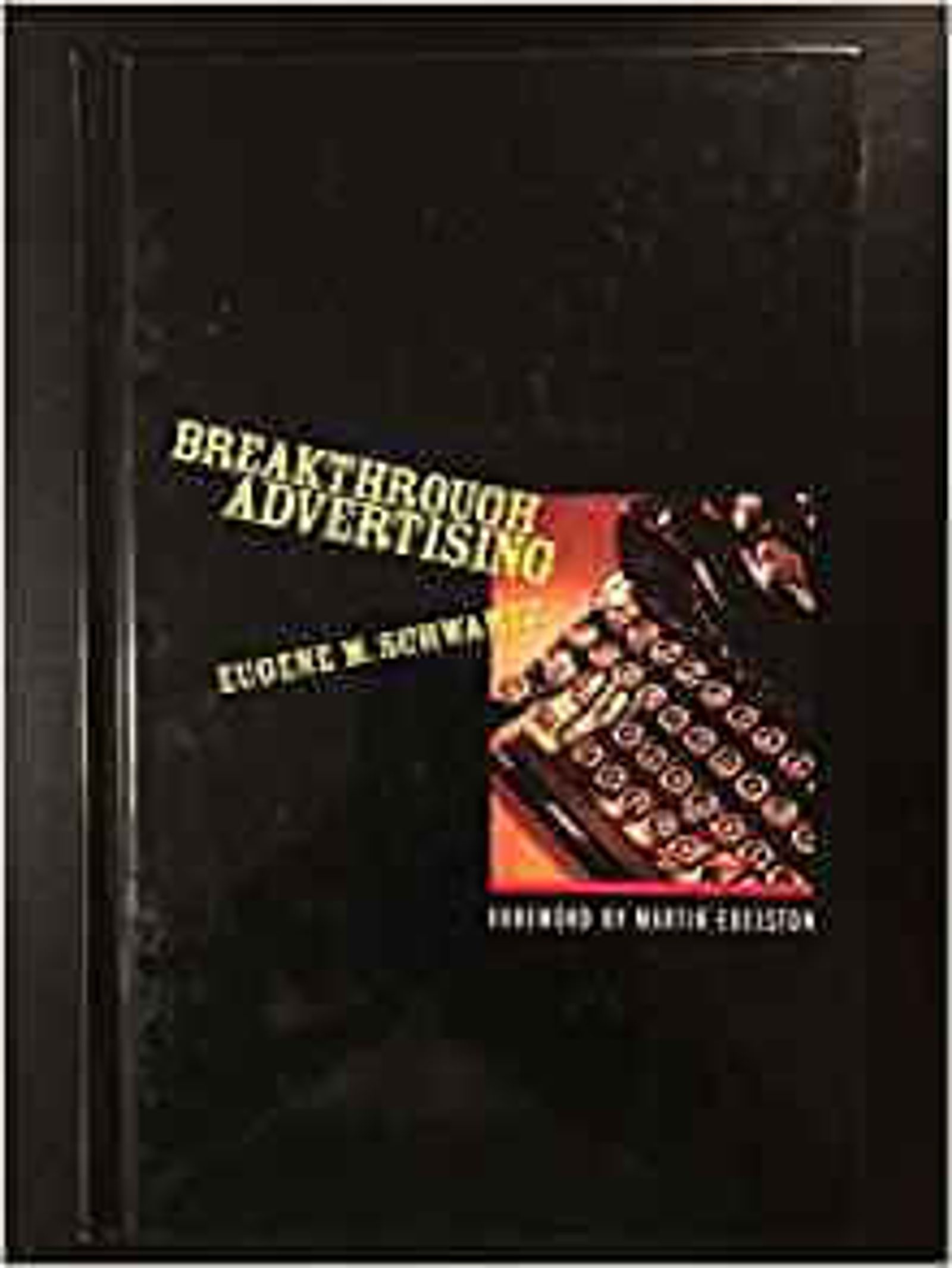
Source: Amazon
Breakthrough Advertising is often cited as the most important copywriting text ever written.
If you can get your hands on a copy (I’ve seen it sell for as much as $500), it’s filled with brilliant analysis of human psychology, marketing, and copywriting.
Here’s one passage that people often miss:
“Let’s get to the heart of the matter. The power, the force, the overwhelming urge to own that makes advertising work, comes from the market itself, and not from the copy. Copy cannot create desire for a product. It can only take the hopes, dreams, fears and desires that already exists in the hearts of millions of people, and focus those already existing desires onto a particular product. This is the copywriter’s task: not to create this mass desire – but to channel and direct it. Actually, it would be impossible for any one advertiser to spend enough money to actually create this mass desire. He can only exploit it. And he dies when he tried to run against it.”
Breakthrough Advertising is perhaps most famous because of Eugene Schwartz’s “five stages of awareness.” These five stages dictate how a copywriter approaches persuasion, and they are as follows:
- Unaware: This person doesn’t know they have a problem, and it’s usually not worth marketing to them.
- Problem aware: This person knows they have a problem, but doesn’t know there are solutions to that problem.
- Solution aware: This person knows there are solutions, but hasn’t chosen one and doesn’t know about your product.
- Product aware: This person knows about your product, but isn’t totally sure it solves their problem.
- Most aware: This person knows a lot about your product. They are on the cusp of buying, but need to know the specifics.
If you can get your hands on a copy of Breakthrough Advertising, it’s worth the read.









